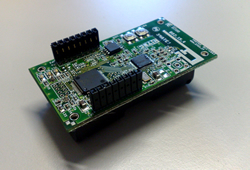
 D3S is a cross-institutional research group based in Trento, Italy, involving researchers at the Department of Information Engineering and Computer Science (DISI)
of the University of Trento and at the Center for Scientific and Technological Research (IRST) of the Bruno Kessler Foundation (FBK).
D3S is a cross-institutional research group based in Trento, Italy, involving researchers at the Department of Information Engineering and Computer Science (DISI)
of the University of Trento and at the Center for Scientific and Technological Research (IRST) of the Bruno Kessler Foundation (FBK).
The research of D3S focuses on distributed systems whose requirements include a dynamic topology and a decentralized architecture. Examples are:
- mobile computing and in particular mobile ad-hoc networks, where the physical topology, and therefore connectivity, undergoes continuous change due to the mobility of hosts, unconstrained by wireless links;
- wireless sensor networks (WSNs), where applications are intrinsically built out of many cooperating tiny devices, whose limited resources and deployment environment force dinamicity through duty-cycling and failures.
- large-scale, peer-to-peer computing, where millions of nodes are interconnected by a logical topology that is continuously under churn due to users joining and leaving.
 In these contexts, the research themes of the D3S group lie at the intersection of software engineering and networking.
In these contexts, the research themes of the D3S group lie at the intersection of software engineering and networking.
On one hand, our goal is to provide programmers with high-level programming abstractions and middleware simplifying the development chore, greatly complicated by dynamicity and decentralization. On the other hand, accomplishing this goal in the aforementioned challenging scenarios requires delving into the details of networking protocols (e.g., routing), where novel solutions are necessary to efficiently and reliably support coordination and communication.
 The result of our research is not limited to theoretical results. Over the years, we developed a number of software systems released as open source, notably including the Lime middleware (and its adaptations to WSNs, TinyLime and TeenyLime) and Logical Neighborhoods, a programming abstraction for WSNs. Moreover, in the last years we put a strong emphasis on validating our systems in the field, in real-world applications. Examples are the use of our TeenyLime middleware and dedicated routing protocols for WSNs, such as the reliable, continuous, high-rate structural monitoring of a medieval tower (Torre Aquila), and monitoring and control of illumination in operational road tunnels (in the TRITon project).
The result of our research is not limited to theoretical results. Over the years, we developed a number of software systems released as open source, notably including the Lime middleware (and its adaptations to WSNs, TinyLime and TeenyLime) and Logical Neighborhoods, a programming abstraction for WSNs. Moreover, in the last years we put a strong emphasis on validating our systems in the field, in real-world applications. Examples are the use of our TeenyLime middleware and dedicated routing protocols for WSNs, such as the reliable, continuous, high-rate structural monitoring of a medieval tower (Torre Aquila), and monitoring and control of illumination in operational road tunnels (in the TRITon project).
Read more about specific projects, or go through the papers in the publication list.










